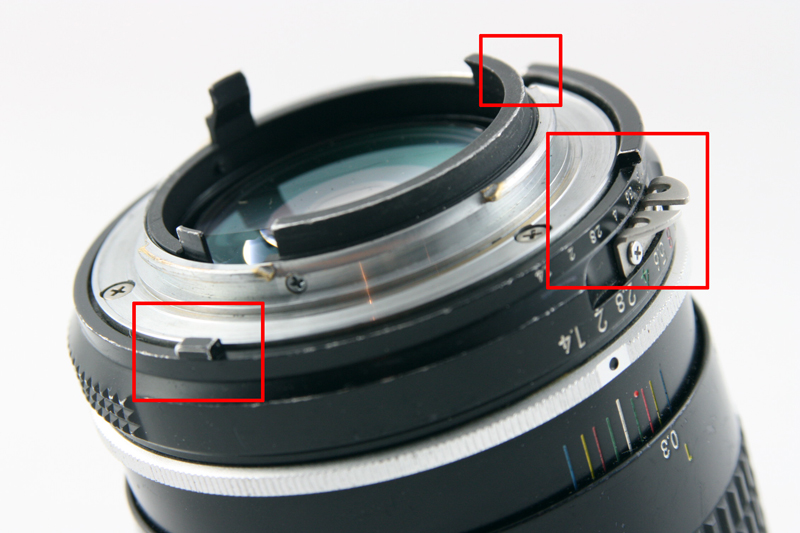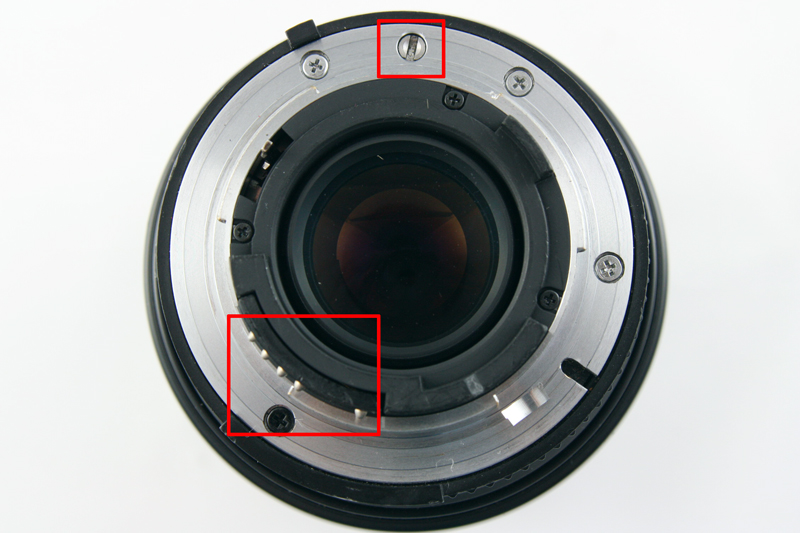Nikon Non-AI, AI, AI’D, AIS…. oh my. Part 1.
Written by Zeb Andrews
The year 1959 was a pretty momentous year for Nikon. That was the year they introduced their Nikon F professional SLR and with it the F style mount for their lenses. Fast forward to today and Nikon continues to use the same F style mount on their current lenses. That is a pretty impressive accomplishment in a photographic world where such consistency is sometimes hard to find. That isn’t to say the F mount is exactly the same as it once was. There have been modifications to the mount over the decades to reflect the evolution of SLR camera technology. That is where this Codex entry comes in, to help you – the consumer and avid photographer – sort through the varieties of F mounts available and to understand the compatibility issues that may arise with each.
Non-AI
We will begin here because this is where Nikon began. The original Nikon F mount is referred to as a non-AI mount (AI being short for auto-indexing). Non-AI Nikon lenses relied on a metal flange attached to the barrel of the lens just forward of the mount to couple with a pin protruding from the meter prism on the camera. As the aperture ring is turned, the position of the flange changes thereby changing the position of the pin coupled to it, which in turn informs the meter of the selected aperture. Additionally these lenses had to be “indexed” when mounted on these early cameras which involved rotating the lens first to the smallest aperture and then to the widest. This action informed the camera of the fastest possible aperture of the lens being mounted, insuring proper metering.
The smooth face of a Nikon non-AI mount is its distinguishing feature. The metal flange used for meter coupling can also be seen in the center of the image.
AI
Nikon refined the F mount in 1977 by introducing the AI modification to their lenses. This took the form of a ridge cut into the previously smooth face of the lens mount. The cuts produced tabs that coupled with a small metal or plastic tab on the body of the camera, achieving the same purpose as the metal flange/pin combination of the previous non-AI mount but without the need for manual indexing. It is worth noting that most AI Nikon mount lenses still included the metal flange making them backwards compatible with previous Nikon cameras.
Notches cut into the mount of an AI Nikon lens allow it to couple to the meter in the camera.
Another look at the AI mount showing the various cuts made into the lens mount as well as the continued presence of the coupling flange seen on earlier non-AI mounts.
AI’D
An AI’d lens mount is a Nikon lens that began life as a non-AI mount and was later converted to an AI mount. This could be done in a couple of ways. One method was to send the lens to Nikon who would replace the aperture ring with an updated version (complete with metal flange for non-AI cameras and a second smaller aperture scale located beneath the main scale). This would make the lens functionally indistinguishable from a true AI lens, the only difference being the change was applied to an older lens. The second method involved everyone other than Nikon – camera repair stores to the guy in his garage – manually cutting their own notches into the lens mount to replicate the AI notches. This home modification was a rougher solution than the job done by Nikon but could be as functional.
AI-S
The AI-S modification was made by Nikon in 1982 and first introduced for cameras such as the Nikon FA, FG and F-301 cameras. Nikon AI-S lenses coincided with changes to the aperture mechanism that allowed for automatic aperture control by the camera body to enable Program and Shutter Priority modes. With this modification, the aperture mechanism could be more precisely controlled than with previous AI lenses. AI-S lenses still included the AI ridge and many also had the metal flange from the non-AI era.
When shopping for lenses, AI-S lenses tend to sell for slightly higher rates over AI lenses. This is due to the fact that AI-S lenses tend to be newer and sometimes enjoyed improved modifications to aperture, optical or coating designs.
AF
AF stands for auto-focus and, despite marking an incredible change in camera and lens technology, remained based on the same F mount. Yes, a Nikon AF lens will mount just fine to your 1979 Nikon F. You won’t have coupling with your meter (as AF lenses do not have the necessary metal flange on the barrel), but the lens will otherwise function just fine. Nikon AF lenses still retain the AI ridge as well as the AI-S cut in the mount, making them fully backwards compatible with the appropriate cameras. AF lenses have two additions: the first is a series of electronic pins in the mount which communicated various information to the camera, and the second is a coupling for the auto-focus motor.
The AF mount introduces electronic contacts for communicating information between lens and camera seen in the lower left as well as a coupling for the auto-focus motor.
AF-D
The only way to tell an AF-D lens apart from a standard AF lens is to read the aperture information printed on the lens barrel; the letter D will be printed after the maximum aperture. For example, a lens may read “Nikkor 70-210mm f3.5-4.5 D”. The lens mount itself remained virtually unchanged from the previous AF mount. Nikon AF-D lenses have better compatibility with the matrix metering modes of modern cameras. Subsequent Nikon AF lenses dropped the “D” from the lens barrel but continued to include all AF-D features.
The D after the maximum apertures signifies the AF-D mount.
AF-S
AF-S lenses incorporated a new type of auto-focus motor in the lens itself, as opposed to the camera body where it was usually located. They are otherwise identical to AF-D and still retain the AI and AI-S modifications.
AF-G
AF-G is the latest modification to the Nikon F mount. AF-G lenses lack a mechanical aperture ring on the lens, relying on control via the camera body to manipulate aperture. Since AF-G is still a Nikon F mount, you can mount an AF-G lens on any old Nikon camera but unless that camera possesses the ability to electronically control aperture, you will have to do all your photography at the maximum aperture of the lens, which is just as well since AF-G lenses also lack the metal flange and the AI ridge for metering on those cameras as well. Some AF-G lenses also cast smaller image circles appropriate for cropped frame DSLR’s and won’t cover a 35mm frame. So, while the lens remains mountable on virtually every Nikon SLR ever made, significant compatibility issues may arise.
The lack of an aperture ring means no manual control of the lens aperture on older pre-AF Nikon cameras.
That covers most of what you need to know Nikon mounts on the lens side of things. Coming up next: a discussion on the practical usage of these lens on the wide array of Nikon bodies available.







